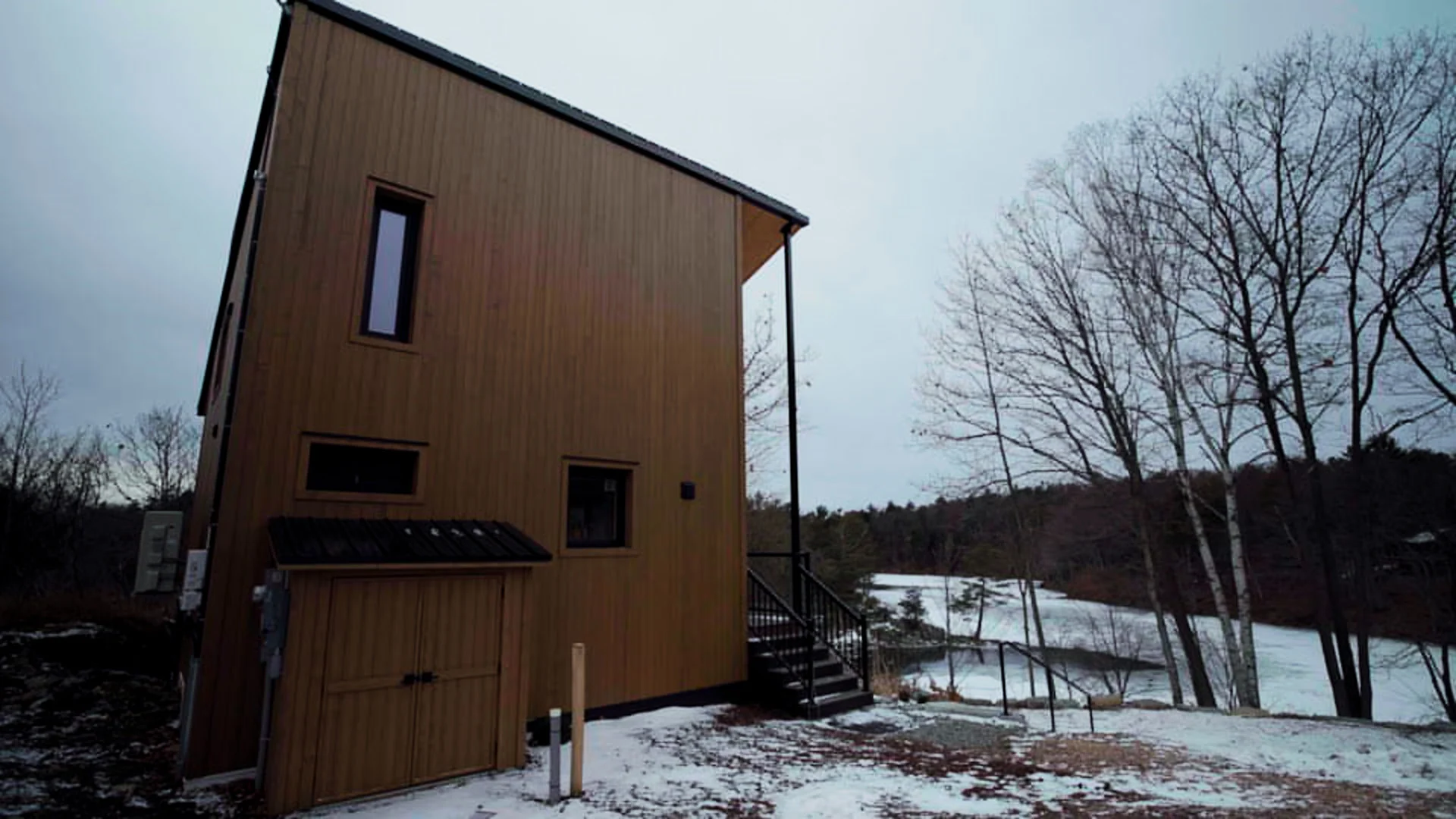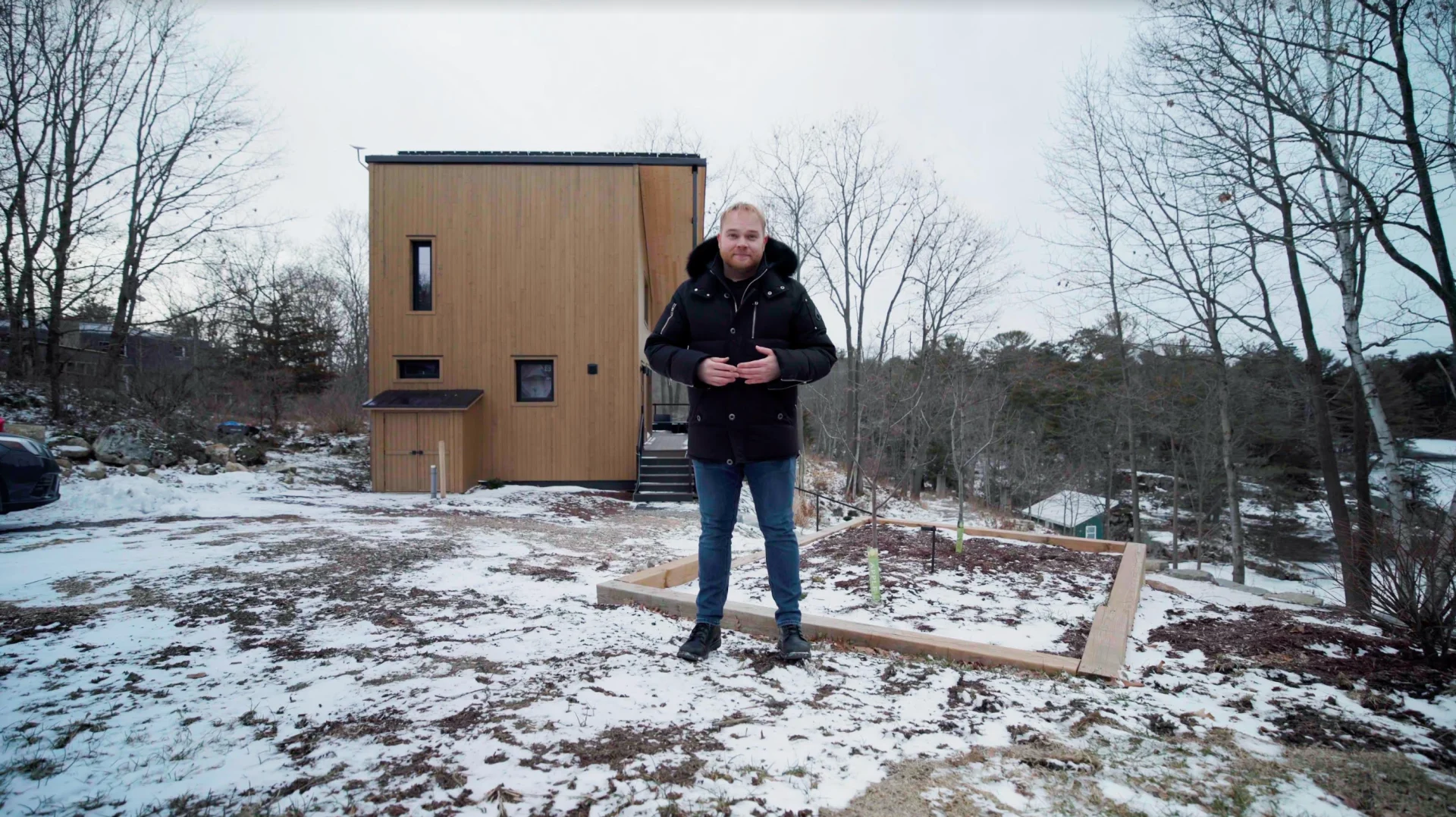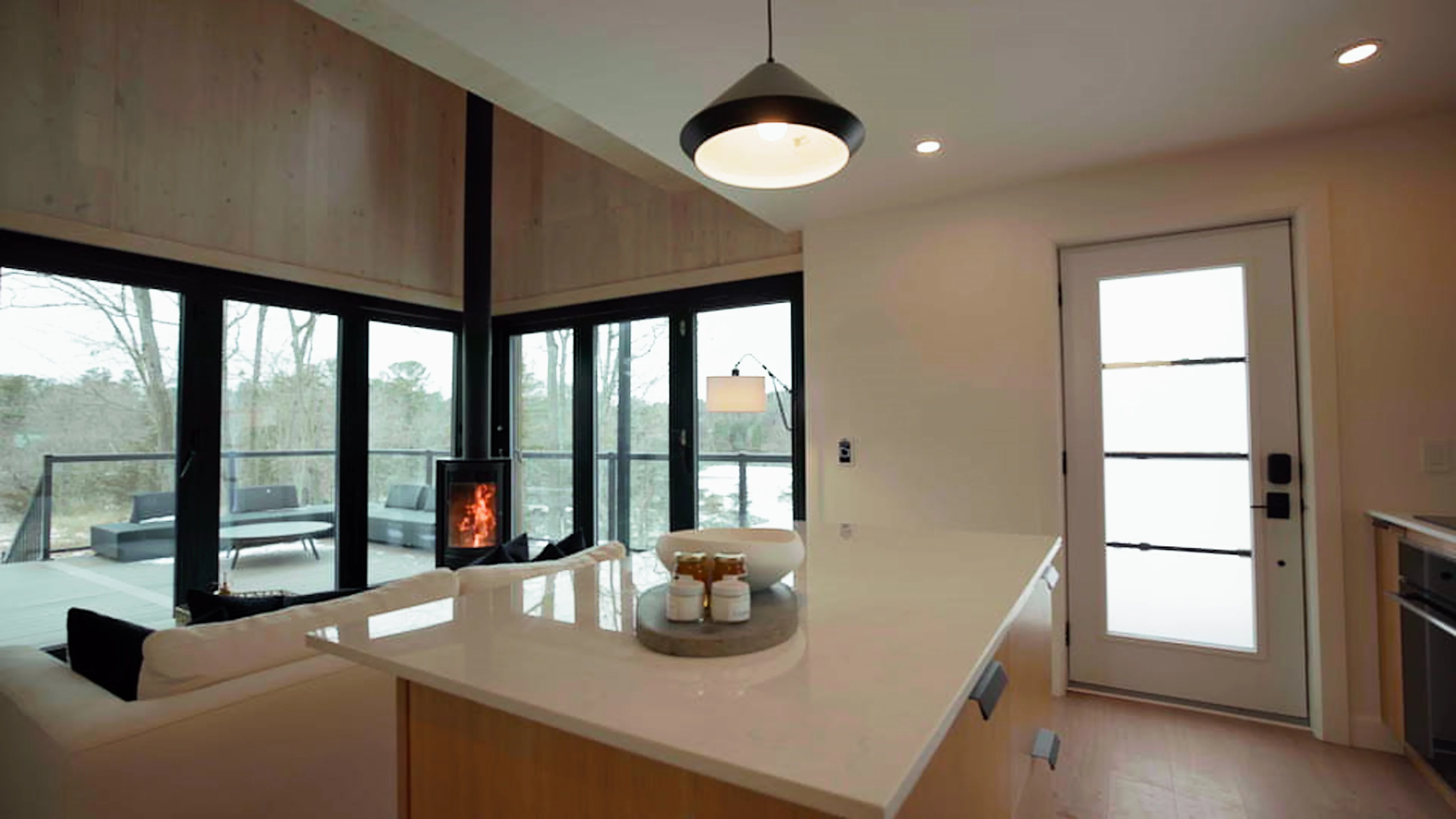
Delivered to your door: Affordable and sustainable homes
The Weather Network's new series, Building Better, delves into the fresh and inventive approaches people and businesses are adopting to construct in response to our current climate challenges. In this episode, reporter Michael Vann heads to Mallorytown, Ont., to discover how a Canadian builder is keeping costs affordable for all.
A hundred years ago, it was commonplace for people to order their home and have it delivered in its entirety to their property. Workers would load up pallets of wood, sinks, toilets, bricks, light fixtures, and more onto train cars and ship them off across the country. On the other end of the line, the pieces would be transported to building sites and constructed by families following instructions, much like the way we put together Ikea furniture these days.
Many houses built in the first half of the 20th century were constructed using this very method. Flat-pack homes aren’t anything new, but the team at CABN—a group of builders dedicated to designing and constructing energy-efficient smart homes for unique locations worldwide—is certainly giving the process a new life.
Nestled between a winding road and a creek in Mallorytown, Ont., there’s a unique cabin that doesn’t look much like the other homes sprinkled along the St. Lawrence River. It certainly fits into the landscape, but even for passersby, it’s easy to be intrigued by the building. The steep, mono-pitched roof towers over the building, taking advantage of both the incredible views and facing south into the sun to optimize energy capture for the solar panels that cover the surface.

CABN home in Mallorytown, Ont. (The Weather Network)
When The Weather Network producer, Veronika Homer, first sent me a link to the CABN website, I was in the middle of researching lots of different sustainable home builders across Ontario. There are quite a few options out there, and I’m sure they're a bit overwhelming for individuals who want to invest their own money in intentional living spaces. I set up a discovery call with the company’s founder, Jackson Wyatt, to get a sense of the CABN process, their method behind sustainability, and why Canadians should be interested in the work they’re doing.

Building Better host, Michael Vann, stands in front a CABN home in Mallorytown, Ont. (The Weather Network)
SEE ALSO: Would you live inside a home built out of plastic?
From our very first introduction, it became clear that Wyatt has an intense passion for sustainable building practices. He can quickly rattle off an impressive amount of facts and figures from the countless studies their company has compiled on their techniques and technologies. It would be easy to say he’s obsessed with sustainability, and his passion is infectious.
CABN’s ethos focuses on the intersection of intelligent building design, fabrication, and assembly with a novel application of technology. They’re reimagining the housing market for sustainable and attainable homes for individuals and communities. And the attainability piece is more than just for show; Wyatt is putting the buyer’s money where his mouth is. He refers to the solar panels, energy recovery ventilators, and heat pumps they use in their builds as the “Lamborghinis” of tech. So how do you make that affordable for your average customer?
The secret comes down to the approach of standardization in building practices. All of the pieces for the homes are built in a climate-controlled factory, eliminating delays from weather events. They also source as many local materials as possible, cutting down on shipping costs and environmental impact. They even have a non-profit dedicated to providing these high-end technologies to remote, low-income, and Indigenous communities at a lower cost.

Interior view of a CABN home in Mallorytown, Ont. (The Weather Network)
DON'T MISS: Rammed earth homes see a sustainable resurgence in Canada
The company boasts that the price of a CABN may be equal to or less than the down payment of a traditional house. A household making the average annual income for the region can afford a CABN and have monthly payments that are not above 30% of their net income. Those savings continue after construction, with fewer energy and maintenance expenses required.
Wyatt believes that ”everybody can build better housing or sustainable housing. It just takes a little bit of a kickstart and seeing how it's done.” He credits bringing together good people, good technology, and a good process with CABN’s quick success and growth. And with more than 600 people signed on to purchase their very own slice of sustainable heaven, it’s clear there’s a big market out there for this technique of building better for the future.
To learn more about these revolutionary homes, watch the video that leads this article.
Missed an episode? Catch up, here!












